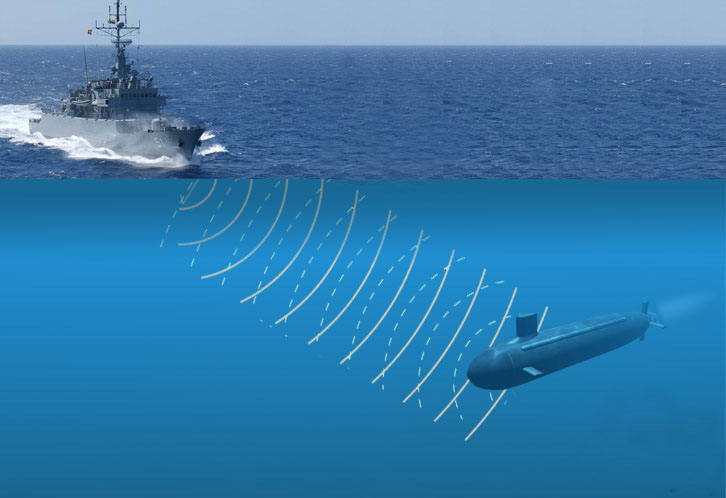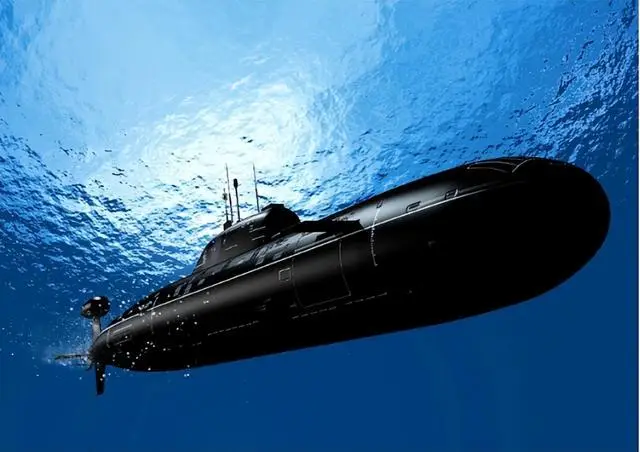The ocean’s depths remain one of Earth’s final frontiers, and cutting-edge robotics technology is revolutionizing how we explore these mysterious waters. 🌊
The Dawn of a New Era in Underwater Exploration
For centuries, humanity has gazed toward the stars, dreaming of cosmic exploration, yet beneath our feet—or rather, beneath the waves—lies an equally alien world. The deep sea, covering approximately 65% of our planet’s surface and reaching depths of nearly 11,000 meters, hosts ecosystems and geological formations that rival any science fiction landscape. Today’s deep-sea robotics technology is finally giving us the tools to unveil these hidden realms with unprecedented clarity and capability.
Recent years have witnessed remarkable advances in autonomous underwater vehicles (AUVs), remotely operated vehicles (ROVs), and hybrid systems that combine the best of both worlds. These sophisticated machines are transforming our understanding of marine biology, geology, archaeology, and even climate science. The latest breakthroughs are not merely incremental improvements—they represent quantum leaps in capability, endurance, and intelligence.
Autonomous Intelligence: When Robots Think for Themselves 🤖
One of the most significant developments in deep-sea robotics is the integration of artificial intelligence and machine learning algorithms. Traditional underwater vehicles required constant human oversight and control, limiting their operational range and efficiency. Modern AUVs, however, can make independent decisions based on environmental conditions, mission parameters, and real-time data analysis.
The Woods Hole Oceanographic Institution’s latest Orpheus-class vehicles exemplify this evolution. These compact AUVs utilize vision-based navigation systems inspired by insect behavior, allowing them to map and navigate complex underwater terrain without GPS or constant communication with surface vessels. This technology enables exploration of extreme environments like hydrothermal vents and underwater caves where traditional navigation fails.
Advanced neural networks now enable robots to identify and classify marine species automatically, detect anomalies in seafloor geology, and even predict equipment failures before they occur. This predictive capability extends mission duration and reduces the risk of losing expensive equipment in the abyss.
Swarm Intelligence: Collaborative Exploration
Taking inspiration from nature’s collective behaviors, researchers are deploying multiple coordinated robots that work together as intelligent swarms. These distributed systems can cover vast areas more efficiently than single vehicles, sharing data and adapting their search patterns in real-time. Norwegian researchers recently demonstrated a fleet of micro-AUVs that coordinated autonomously to map a 50-square-kilometer section of seafloor in record time.
Breaking the Depth Barrier: Engineering for Extreme Pressure 💪
The crushing pressure of the deep ocean has always been the primary engineering challenge for underwater robotics. At the bottom of the Mariana Trench, pressure exceeds 1,000 atmospheres—equivalent to having 50 jumbo jets stacked on top of a person. Recent materials science breakthroughs are enabling robots to venture deeper than ever before.
Ceramic composite materials, originally developed for aerospace applications, are now being adapted for deep-sea housings. These materials offer exceptional strength-to-weight ratios and can withstand extreme pressures without the bulk of traditional titanium pressure vessels. Japanese engineers have developed glass sphere pressure housings with remarkable depth ratings, combining transparency for camera systems with structural integrity.
Soft robotics represents another innovative approach to the pressure problem. By eliminating air-filled spaces and using flexible, pressure-compensated materials, these robots essentially match the surrounding water pressure, reducing structural stress. Harvard’s Octobot project has pioneered soft robotic designs that mimic marine animals, creating vehicles that can squeeze through tight spaces and adapt to complex terrain.
Power Solutions: Extending the Mission Clock ⚡
Energy storage and generation have traditionally limited underwater robot endurance. Conventional battery technology provides only hours or days of operation, requiring frequent surface recovery and recharging. Recent innovations are dramatically extending mission durations.
Lithium-ion batteries optimized for high-pressure environments now offer unprecedented energy density. However, the most revolutionary development is energy harvesting systems that extract power from the ocean itself. Thermal gradient generators exploit temperature differences between deep and surface waters, while underwater fuel cells convert dissolved oxygen and hydrogen into electricity.
The Boeing-developed Echo Voyager represents a milestone in autonomous underwater vehicle endurance. This 51-foot submarine can operate independently for months at a time, recharging its batteries through diesel-electric generators and surfacing only periodically for communication updates.
Bioinspired Energy Efficiency
Marine animals achieve remarkable energy efficiency through their movement strategies. Bio-inspired propulsion systems are now being incorporated into underwater robots, mimicking the undulating motions of rays and eels or the efficient gliding of sea turtles. These systems can reduce energy consumption by up to 60% compared to traditional propeller-driven designs.
Sensory Revolution: Seeing the Invisible 👁️
The deep ocean is a realm of perpetual darkness, extreme cold, and limited visibility. Advanced sensor packages are giving robots superhuman perception capabilities in these challenging conditions.
Multibeam sonar systems now generate three-dimensional maps with centimeter-level resolution, revealing seafloor features in extraordinary detail. Synthetic aperture sonar takes this further, creating radar-like images that penetrate sediment to reveal buried objects and geological structures. These technologies have revolutionized underwater archaeology, discovering shipwrecks and ancient settlements that had eluded previous searches.
Optical imaging has also advanced dramatically. Low-light cameras with adaptive optics and computational photography techniques can capture color images in near-total darkness. Hyperspectral imaging systems analyze dozens of light wavelengths simultaneously, identifying chemical compositions and biological signatures invisible to conventional cameras.
Chemical sensors inspired by fish olfaction can detect minute concentrations of dissolved substances, tracking hydrothermal plume chemistry or identifying pollution sources. These artificial noses help robots locate objects of interest in the vast ocean expanse.
Communication Challenges: Talking Through Water 📡
Radio waves that enable instant global communication on land barely penetrate seawater. This fundamental physics constraint has made underwater communication one of robotics’ most persistent challenges. Recent breakthroughs are finally enabling reliable data transmission from the depths.
Acoustic modems have improved dramatically, now achieving data rates of hundreds of kilobits per second over multi-kilometer ranges. Frequency-hopping techniques and advanced error correction make these systems remarkably robust against interference and multipath distortion.
Laser communication systems offer even higher bandwidth, transmitting video and high-resolution imagery in real-time. Though limited to line-of-sight operation and shorter ranges, these optical systems enable unprecedented data-rich operations when surface vessels or underwater docking stations are nearby.
Perhaps most intriguing are quantum communication experiments conducted underwater. Though still in early stages, quantum entanglement could theoretically enable instantaneous communication regardless of distance—a capability that would revolutionize deep-sea operations.
Applications Transforming Industries and Science 🔬
These technological advances aren’t merely academic curiosities—they’re enabling practical applications across multiple sectors.
Marine Biology and Ecosystem Monitoring
Deep-sea robots are documenting biodiversity in the least-explored ecosystems on Earth. Researchers have discovered thousands of new species using advanced imaging and sampling systems. Long-duration monitoring missions track seasonal changes, migration patterns, and the impacts of climate change on deep-sea communities. Environmental DNA samplers collect genetic material from seawater, identifying species without physical collection.
Resource Exploration and Management
The offshore energy industry relies heavily on underwater robotics for pipeline inspection, infrastructure maintenance, and resource assessment. Next-generation robots perform complex manipulation tasks like valve operation and equipment repair at depths previously requiring human divers or expensive specialized systems. Mineral exploration companies use AUVs to survey potential mining sites, assessing resources while minimizing environmental impact through careful baseline monitoring.
Climate Science and Oceanography
Understanding ocean circulation, temperature distribution, and carbon cycling is crucial for climate modeling. Autonomous underwater gliders now patrol ocean basins for months, collecting continuous profiles of temperature, salinity, and chemical parameters. These floating robots use minimal energy by adjusting buoyancy to rise and descend through the water column, gliding forward through their wing-like bodies.
Underwater Archaeology and Heritage Preservation
Robotic systems have revolutionized maritime archaeology, enabling non-invasive investigation of historic shipwrecks and submerged settlements. High-resolution photogrammetry creates detailed 3D models for virtual museum exhibits and research. Ancient trade routes are being mapped, revealing new insights into human history and cultural exchange.
Future Horizons: What’s Coming Next? 🚀
The pace of innovation in deep-sea robotics shows no signs of slowing. Several emerging technologies promise to further expand capabilities in coming years.
Biomimetic robots that perfectly replicate marine animal forms and behaviors will enable close observation of sea life without disturbance. Imagine robotic fish that school with real tuna or artificial jellyfish that drift with ocean currents, gathering data while remaining virtually undetectable.
Underwater docking stations and charging hubs could create permanent deep-sea infrastructure, allowing robots to operate indefinitely without surface recovery. These underwater bases might incorporate manipulators for self-repair and modular components for mission reconfiguration.
Advanced materials science may enable shape-shifting robots that reconfigure their bodies for different tasks—streamlined for long-distance travel, then transforming into manipulator-heavy configurations for detailed work. Self-healing materials could automatically repair damage from collisions or pressure-related stress.
Human-Robot Collaboration Underwater
Rather than replacing human divers entirely, future systems will enhance human capabilities through sophisticated collaboration. Exoskeleton-assisted diving suits with robotic components could enable humans to work at greater depths for longer periods. Virtual reality interfaces might allow operators to experience telepresence through robotic avatars, combining human judgment with robotic endurance.
Environmental Considerations and Responsible Innovation 🌍
As these powerful technologies proliferate, the oceanographic community recognizes the importance of responsible development and deployment. Underwater robots themselves can impact sensitive ecosystems through noise, light pollution, physical disturbance, and potential contamination from battery leaks or hydraulic fluids.
Leading research institutions are establishing best practices for minimizing robotic footprints. These include acoustic quieting technologies, red-light illumination that’s less disturbing to marine life, and biodegradable materials for disposable components. Comprehensive environmental impact assessments now precede major robotic missions in sensitive areas.
International cooperation is essential for managing deep-sea exploration responsibly. The United Nations’ recent high-seas treaty addresses concerns about exploitation of international waters, establishing frameworks for scientific collaboration while protecting marine ecosystems from destructive practices.
Democratizing Deep-Sea Technology 💡
Historically, ocean exploration required massive budgets and institutional resources. Recent trends toward miniaturization, open-source designs, and commercial availability are making underwater robotics more accessible.
Companies like Blue Robotics and OpenROV have created affordable platforms that educators, citizen scientists, and small organizations can deploy. These systems, while less capable than cutting-edge research vehicles, enable widespread participation in ocean exploration and monitoring.
Educational initiatives are introducing students to underwater robotics through competitions and hands-on projects. The MATE ROV Competition now involves thousands of students worldwide, inspiring the next generation of ocean engineers and scientists.
Diving Into Tomorrow’s Ocean Discovery
The convergence of artificial intelligence, advanced materials, sophisticated sensors, and innovative propulsion systems is creating underwater robots with capabilities that would have seemed impossible just a decade ago. These machines are revealing the ocean’s secrets at an accelerating pace, discovering new species, mapping unexplored terrain, and monitoring environmental changes crucial to our planet’s future.
Yet for all these technological marvels, we’ve explored less than 20% of the ocean floor in detail. Vast territories remain completely unknown, potentially harboring revolutionary discoveries in biology, geology, and chemistry. The latest breakthroughs in deep-sea robotics are not endpoints but rather the opening chapters of humanity’s comprehensive investigation of Earth’s last great frontier.
As these technologies mature and proliferate, they promise to transform our relationship with the ocean—from a mysterious, largely inaccessible realm to an integral part of human knowledge and stewardship. The robots exploring today’s depths are pioneers, and their discoveries will shape scientific understanding, economic opportunities, and environmental conservation for generations to come.
The future of ocean exploration is robotic, autonomous, and more exciting than ever before. As we continue pushing technological boundaries, we’re not just building better machines—we’re expanding humanity’s presence into Earth’s final frontier, one dive at a time. 🌊🤖
Toni Santos is a visual storyteller and educational ethnographer whose work celebrates the fluid knowledge systems of nomadic cultures. Through art and research, Toni brings attention to how learning has thrived outside traditional institutions—rooted in movement, oral tradition, and deep connection to land and community.
Guided by a passion for ancestral wisdom, adaptive pedagogy, and cultural resilience, Toni explores the tools, rituals, and environments that once shaped the minds of travelers, herders, and migrating communities. Whether illustrating storytelling circles beneath open skies, wearable mnemonic devices, or maps woven into textiles, Toni’s work honors learning as a lived, sensory, and communal experience.
With a background in visual anthropology and intercultural design, Toni reconstructs the educational models of mobile societies through images and narratives that restore their dignity and relevance in today’s world.
As the creative mind behind Vizovex, Toni shares a rich tapestry of visual essays, artifact-inspired art, and curated stories that reveal the genius of teaching and learning on the move.
His work is a tribute to:
The wisdom of learning through journey, rhythm, and story
The spatial and environmental intelligence of nomadic cultures
The power of intergenerational knowledge passed outside walls
Whether you’re an educator, researcher, or lifelong learner, Toni invites you to step into a world where education is not confined, but carried—one step, one song, one shared insight at a time.





